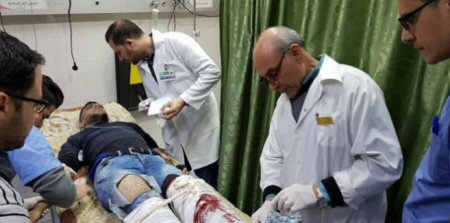Al-Awda hospital ER team providing emergency care to an injured patient. Credit: UHWC
A new report by WHO shows that, since the start of the mass demonstrations in Gaza, on 30 March, 2018, 261 people have been killed and a total of 27,942 people injured:
“13,174 were treated and discharged from the Trauma Stabilization Points (TSPs) and the remaining 14,768 casualties were transferred to MoH and NGO hospitals. 6,386 people had live ammunition gunshot wounds, of which 5,561 (87%) presented limb gunshot wounds.”
The report additionally said that, as the current fuel reserve for hospitals declines, mitigation measures continue to affect the health system, such as reduced sterilization, diagnostic imaging, cleaning, laundry and catering services. However, the Electricity Distributing Company has connected some of the hospitals with extra grid lines, which has in turn decreased the dependency on fuel to run-backup generators; in addition, ad-hoc donations from various charities have prevented the closure of hospitals.
Meanwhile, the Ministry of Health continues to highlight the potential threat facing the health sector, should the remaining fuel gets completely depleted.
The report added that chronic shortages of pharmaceuticals and medical supplies at all facility levels continue to pose major challenges for health services, saying that the Health Cluster requires $32 million USD to response to humanitarian needs in the oPt.
The Humanitarian Response Plan for the Health Cluster will target 900,000 people out of the 1.2 million identified as acutely in need of humanitarian health assistance.

